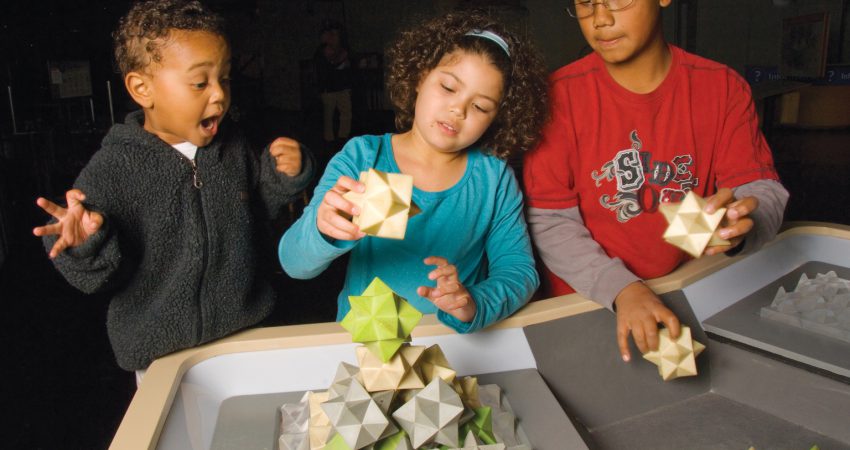
By Molly Shea - February 2015
PAPER CITATION
Gutiérrez, K.D. , Baquedano‐López, P., & Tejada, C. (1999). Rethinking diversity: Hybridity and hybrid language practices in the third space, Mind, Culture, and Activity,6(4), 286-303.
Within learning environments kids talk can often be seen as disruptive or off task. However, Gutierrez et al reframe how teachers can engage kids talk and welcome diverse activities and linguistic practices to deepen learning and participation. This article explores how teachers allow students to offer local knowledge, reorganize activities, and make meaning that can connect to the official curriculum in unexpected ways.
Research Design
Gutierrez et al conducted a long-term ethnographic study of formal and non-formal learning environments to see how participation can shift over time with the aid of thoughtful facilitation. They wondered about how shifts in participation lead to facilitate social and cognitive opportunities for learning. In this paper the authors focus on a combined second and third grade classroom at a school located in a largely Latino, working-class neighborhood in city on the West Coast. The school was a language magnet school where teachers had bicultural knowledge multilingual abilities. The focal teacher, Ms. Rivera, had been teaching for two years and was fully literate in Spanish and English. She described her teaching practice as based on an underlying idea that learning is social and part of her goal was to “give voice to the children” and “break the power structures of society, not to reproduce them”. The unit of analysis was the activity systems of the classroom. The focus of the study was on the hybrid language practices and activities of the classroom that led to deeper opportunities for meaning making and student participation.
Research Findings
Kids often bring up alternative ideas and make connections to the official lesson in unexpected ways that can lead the learning community into directions that the teacher did not expect, but further student thinking and deepen student participation. Researcher found that there were a number of facilitation tactics that allowed kids to productively reorganize classroom activities. For example in the course of a teacher lead conversation Ms. Rivera was setting up the format for the class activity. She instructed the students to ask questions and then share with class. One student interrupted the teacher to ask if the class could share first before they asked question. The teacher takes up the change of the classroom activity and allows students to share with their classmates before creating a list of questions. In this case, the teacher honored the student’s suggestion and incorporated something that veered away from the official planned curriculum of the class.
The authors also found that engaging kids in their seemingly unrelated or off topic comments often opened up opportunities for students to incorporate local knowledge into the classroom curriculum. For example when a student asked the teacher during a whole class discussion “¿Qué es esperma?” {{What is sperm?}}, there was student chatter and one student, Jorge, answered the another student by saying “Es como un tadpole.” {{It’s like a tadpole}}. Then Jorge made swimming tadpole motions with his hands. The teacher picked up on the unofficial student chatter and took up the question and wrote it on the board with the other student-generated questions. Then Ms Rivera took up Jorge’s answer as she worte the question on the board. She smiled, and said, “Jorge parece como renacuajos, pero no son renacuajos.” {{They look like tadpoles, but they are not tadpoles.}} In this case the student chatter in the back of the classroom deepened the conversation and at the same time Ms Rivera was able to continually nuance students’ understanding of sperm.
Finally the authors found that taking student talk and ideas seriously often allowed students to bring unofficial talk into the official space of the curriculum to promote deeper understanding. For example kids were able to share stories about how many children each of their grandmothers had had to begin to answer a student generated question about how many babies women could have over a lifetime or how spines were constructed of many bones by relating it to a story one student’s uncles told.
Theoretical Basis
The authors use the term Third Space to describe a multidimensional, multi-voiced classroom where the official curriculum and classroom expectations become one of three dimensions available in a learning environment. There are official spaces in classrooms where students are focused on the activity sanctioned by a teacher. There are unofficial spaces where kids create their own activities. And there are hybrid spaces in between these two extremes where teachers and students make connections across the diversity of resources available in the learning environment. This last space researchers call Hybridity, which is where unofficial chatter meets official curriculum and creates rich opportunity for kids to combine ideas from stories, other contexts, and hunches in order to make new meaning.
Implications for Practice
This research acknowledges and builds on the idea that both facilitators and kids can bring ideas and resources to the classroom from unpredictable places in order to create a richer learning environment for the whole class. Facilitators can
- Build flexible class plans and listen for student conversations and allow those conversations to become questions for inquiry.
- Assume that kids make sense and ask questions about their ideas, stories, or projects to deeply understand how they are making sense of ideas or building upon their projects.
- Create linguistically and artifact-rich learning environments where a diversity of linguistic resources and practices can work together to help students and teachers build complexity and create a culture of collaboration.




